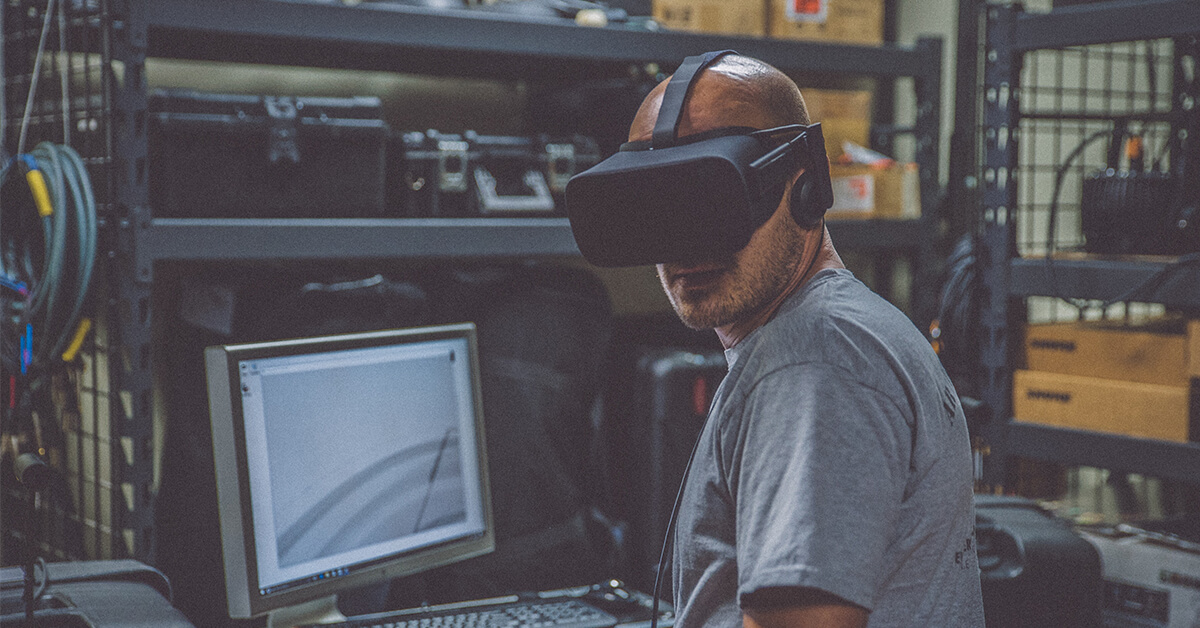AR and VR: More than Just Video Games
“The future is already here – it’s just not very evenly distributed,” the science fiction writer William Gibson once wrote. That seems like an apt quote to apply to “AR” (augmented reality) and “VR” (virtual reality). While AR and VR provide vital functions in many industries, they often don’t factor into plenty of people’s realities. So to appreciate their use and potential, let’s go over both terms, where they originated, and where they’re likely headed.
AR v. VR
Someone who’d never heard of “AR” and “VR” might be forgiven for assuming they were types of video recorders or motor vehicles. Actually, they are terms for technology that changes the way we literally see the world. The basic difference between the two is that AR enhances or modifies that world, while VR creates an entirely new world.
An example of AR might include a Snapchat lens that sprouts bunny-ears out of your head or turns your nose into a fawn’s snout on your screen. When you take a snap on your phone, your surroundings beyond the screen still occupy most of your field of vision. VR is more immersive. If you put on the Oculus Rift headset, all you can see is the video game you’re playing, and it really does seem as if you’ve stepped out of your living room and into the Star Trek spaceship or a zombie apocalypse.
More than Just Video Games
Scientists and military engineers had been experimenting with AR and VR through the 20th century, but many people claim that the video game industry took it mainstream. After all, it’s a natural fit: What’s more exciting for a gamer than to be plunked down inside the video game he’s playing? Today, AR and VR dominate this market to such an extent that people can …
- Chase Pokemon around public parks and sidewalks.
- Try their luck at Vegas-style slots machines in their kitchens.
- Play Dungeons & Dragons with friends in a medieval tavern-style VR.
The list goes on. At the same time, AR and VR have also expanded beyond video gaming. They now have real-world applicability in a number of different fields. Here are just a few:
- Medicine. Headsets are being developed that allow surgeons to visualize a patient’s organs in holograms. Even great surgeons run the risk of nicking an organ if a patient has a unique anatomy that only occurs in, say, 1/100,000 cases. But AR allows a clinician to view interactive 3D images of these organs floating atop the patient, which should help him visualize what he’s operating on and how best to proceed.
- Airports. Hubs as huge as Heathrow or O’Hare are practically cities unto themselves. That’s why airlines are developing technology to streamline the efficiency of the boarding process. Some ideas being floated out include giving passengers smartglasses to help them pinpoint where they’re boarding. Another one: Giving airline workers facial-recognition technology to identify passengers and lead them where they need to go.
- Architecture. Let’s say you’re an architect, and you’ve just drafted your final blueprint of the building you’ve been storing up in your mind. How useful would it be to put on the Oculus Rift headset and step inside that building? AR allows architects and building designers to walk around in their vision, double-checking the angles, editing the flaws, and brushing up on the final touches.
Between 2017-2022, the AR/VR market is expected to swell from $14 billion to $209 billion



